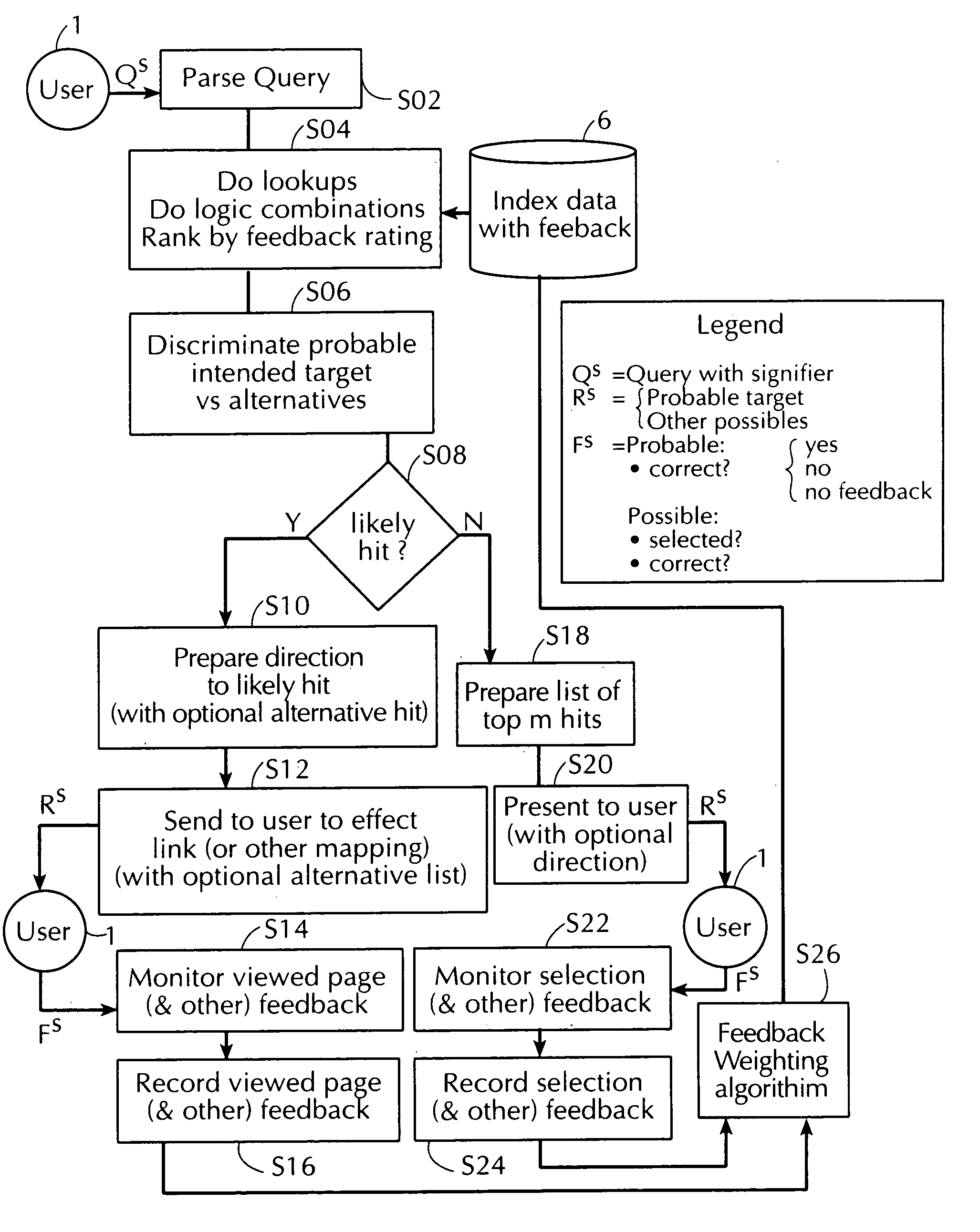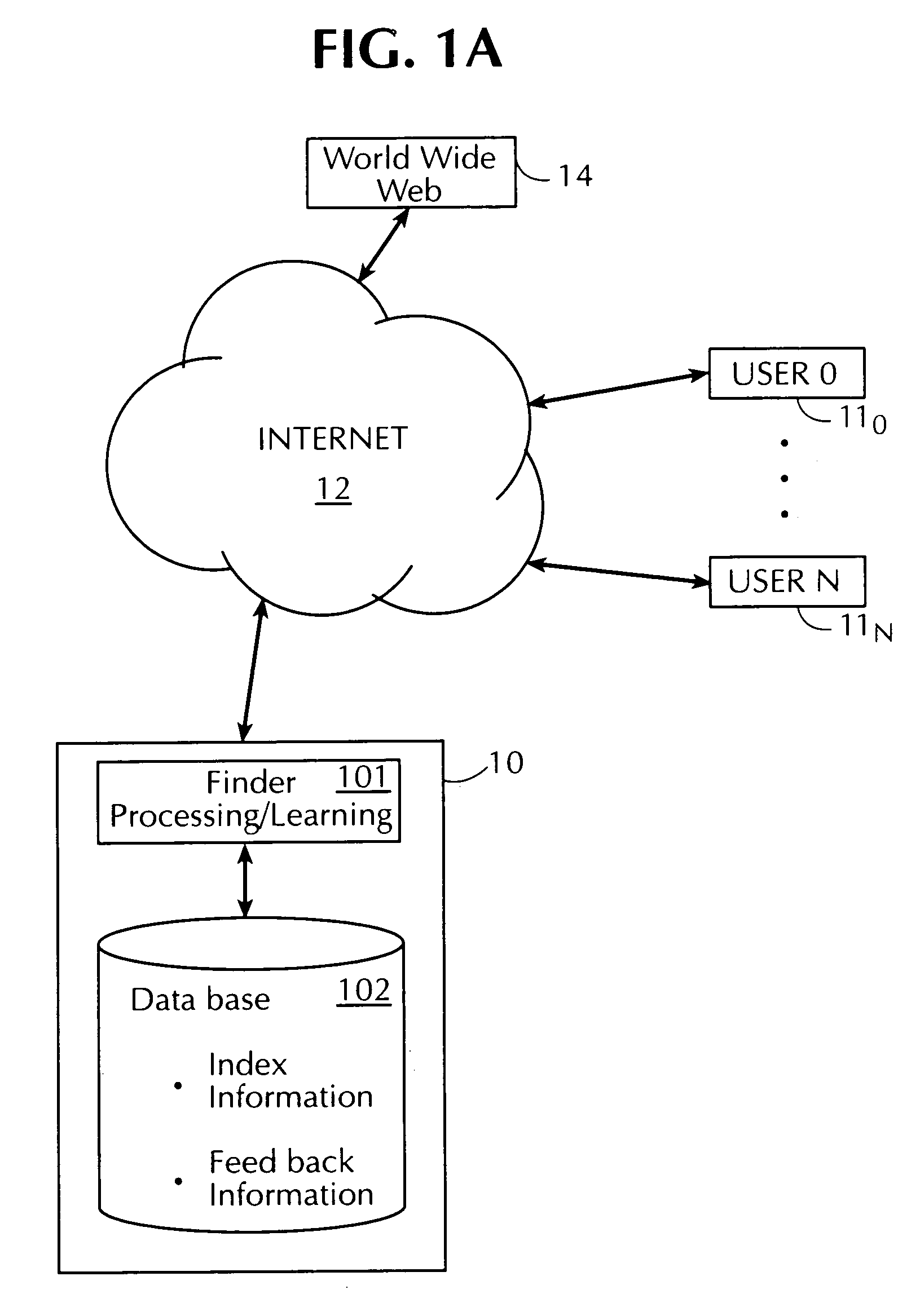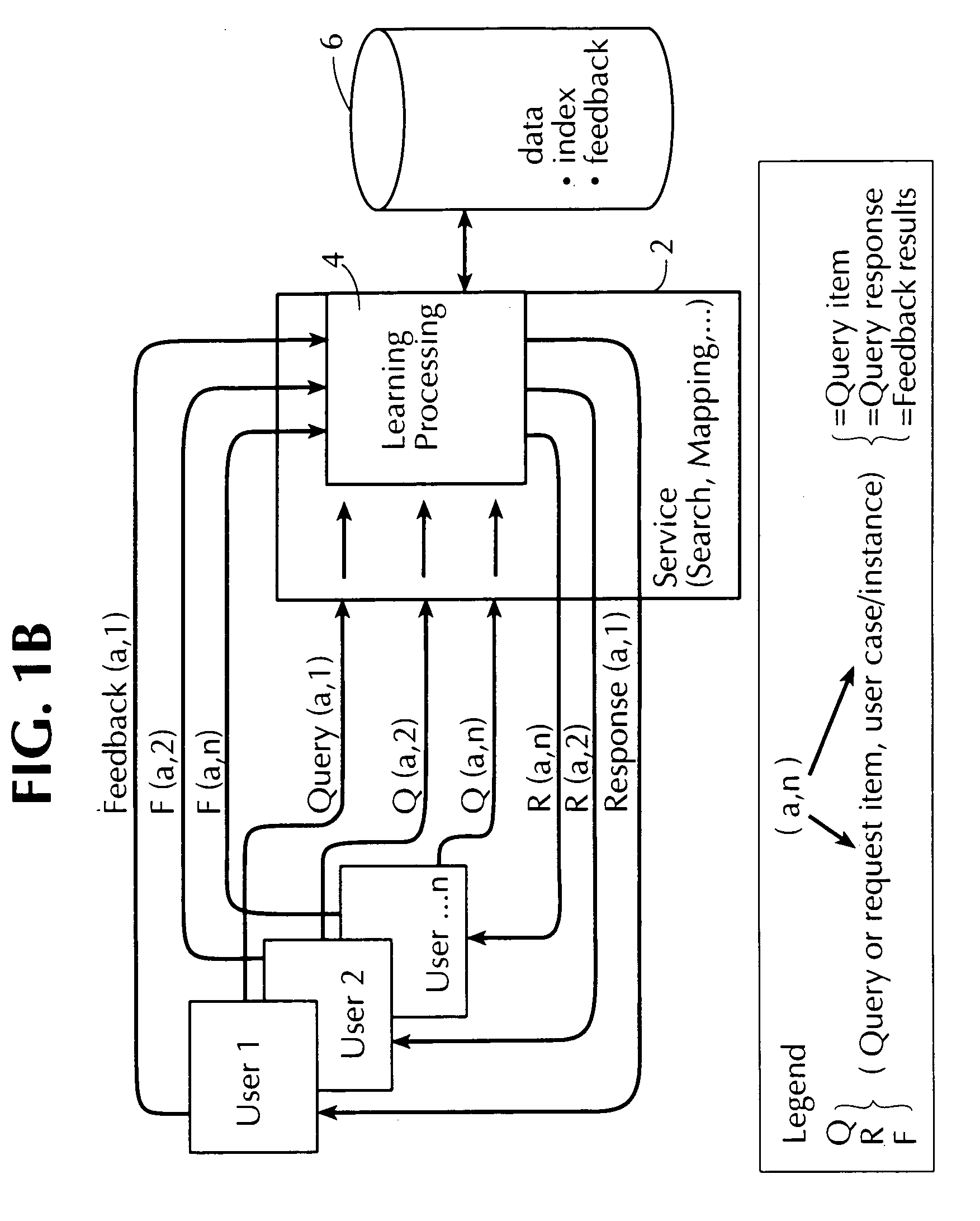Method and apparatus for utilizing the social usage learned from multi-user feedback to improve resource identity signifier mapping
a resource identity and signifier mapping technology, applied in the field of methods and apparatus for utilizing the social usage learned from multi-user feedback to improve resource identity signifier mapping, can solve the problems of enormous information available on the web, author-controlled search engines producing search results of enormous size, and difficult to find information, so as to improve the ranking of possible lists and improve the results of search.
- Summary
- Abstract
- Description
- Claims
- Application Information
AI Technical Summary
Benefits of technology
Problems solved by technology
Method used
Image
Examples
Embodiment Construction
“Population Cybernetics” and the Internet
[0067]As a general matter, the present invention relates to a technique that collects experience (a knowledge base) from a mass population that is open ended or universal, either over all domains, or over some definable subject or interest domain or strata. This represents a significant improvement over prior art techniques, which are generally limited in the scope of the population and extent of experience from which they draw their knowledge base.
[0068]The technique of the present invention, in a preferred embodiment, uses the Internet to do this in a way that is powerful, economical, and far-reaching. The technique, in the preferred embodiment, uses the Internet to enable collection and maintenance of a far more complete knowledge base than has been used with any prior technique except Collaborative Filtering (CF).
[0069]In the present invention feedback learning is advantageously utilized, so that the information is not just collected, but...
PUM
 Login to View More
Login to View More Abstract
Description
Claims
Application Information
 Login to View More
Login to View More - R&D
- Intellectual Property
- Life Sciences
- Materials
- Tech Scout
- Unparalleled Data Quality
- Higher Quality Content
- 60% Fewer Hallucinations
Browse by: Latest US Patents, China's latest patents, Technical Efficacy Thesaurus, Application Domain, Technology Topic, Popular Technical Reports.
© 2025 PatSnap. All rights reserved.Legal|Privacy policy|Modern Slavery Act Transparency Statement|Sitemap|About US| Contact US: help@patsnap.com



